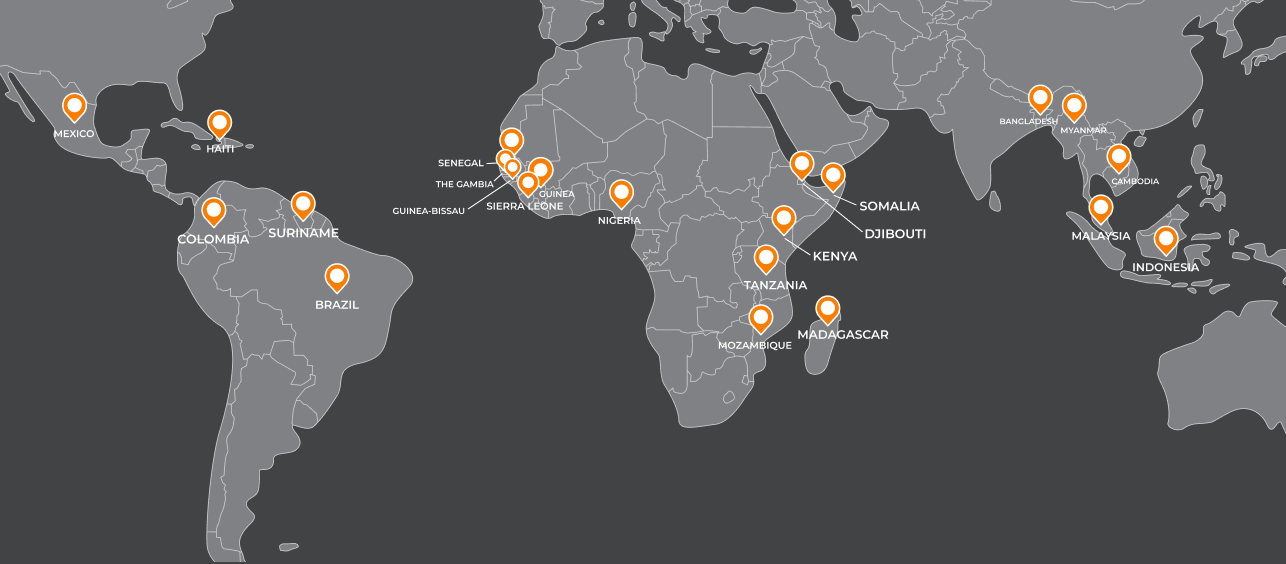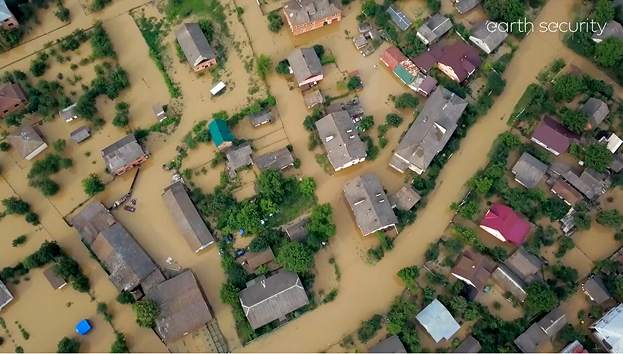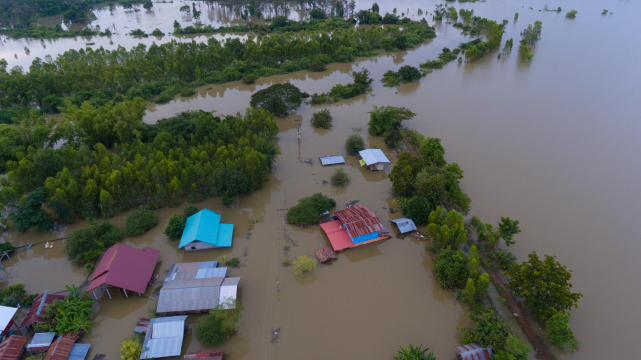- New report from Earth Security shows mangrove forests are an under-appreciated carbon asset that could unlock 380 million tCO2 of sequestration by 2040
- The report estimates $11.1 billion investment is needed over the next twenty-years, to tackle the full restorable potential of over 700,000 hectares across 25 countries
- This could lead to a massive potential return on investments of $11.8 billion* over the same period, if the report’s recommendations on carbon market pricing are followed
- The surge in 2020 of corporate pledges to achieve carbon neutrality is expected to increase the demand for and prices of nature-based carbon sequestration requiring new conduits to finance natural assets on a greater scale
[London & Copenhagen, 10 December 2020]
A new report by Earth Security, environmental finance specialists, finds global investment in mangrove regeneration could return $11.8 billion by 2040 if carbon markets were to reflect the true value of nature.
The report, Financing the Earth’s Assets: The Case for Mangroves as a Nature-based Climate Solution, outlines the extent to which mangrove forests are underappreciated in their abilities to slow global heating, shield against weather extremes, help halt the runaway extinction of biodiversity and support local economies.
Mangroves can store carbon up to 400% faster than land-based tropical rainforests and could unlock 380 million tCO2 of sequestration by 2040. They also provide breeding grounds for marine biodiversity and 80% of global fish populations depend on healthy mangrove ecosystems.

The report details a comprehensive plan to regenerate mangrove forests and carbon sequestration more effectively than today’s scattered offset projects. It outlines the creation of the first global Municipal Bond Fund to seek nature-based climate adaption at scale. The bond will support the creation of a network of 40 cities across the world, from Miami in Florida to Mongla in Bangladesh. Earth Security has identified these cities for their potential to invest in mangrove regeneration as a cost-effective way to adapt to climate change.
Mangrove forests offer coastal cities a protective shield against extreme weather, which can be up to 50-times more cost-effective than building a cement wall. In 2017, mangroves prevented $1.5 billion in flood damages in Florida, protecting over half a million people during Hurricane Irma. Damages were 25% lower in those Florida counties where mangroves were present.
Despite their potential, mangroves are under huge pressure; 50% have been already lost. They are one of the most threatened ecosystems on the planet and are currently being lost at a rate of 2% per year, faster than coral reefs and all other forest types, including tropical and sub-tropical forests. The 40 locations, identified by Earth Security, account for almost 70% of global mangroves still standing, currently storing some three billion tonnes of CO2e.
CEO and Founder of Earth Security, Alejandro Litovsky, says: “The evidence on the value of nature is clear. But we must move faster and more boldly in investing in nature’s assets; from isolated small projects to a planetary scale. This report is the first of many offering the analytics and new investment pathways to do that. We must look to re-purpose every investment option in the toolbox, while creating more agile global networks that aggregate ecological regeneration investments on a global scale. The mind-boggling economic value of mangroves as a climate solution is a perfect example of why investing in natural assets is the route to align ecological and economic returns.”
The Earth Security report makes five strong recommendations to align global finance with the regeneration of mangroves at scale, and which align with the UN Secretary General Antonio Guterres’ call for urgent and concerted action to reduce carbon emissions . These include:
1. Creating a premium price for ‘blue carbon’ in voluntary carbon markets - With COP26 on the horizon and a surge in corporate pledges in 2020 to achieve carbon neutrality, demand for and prices of nature-based carbon sequestration look set to increase exponentially. The current price of carbon credits ($10-15 per tCO2) is not high enough to deliver conservation and regeneration. The price must at least double to $29 per tCO2 for regeneration to be possible at the required scale, and quadrupole to $60 to achieve returns forecast at $11.8 billion. The significant value of coastal ecosystems ‘beyond carbon’ – from storm protection to sustaining commercial fish, should position blue carbon credits (carbon captured by the world's ocean and coastal ecosystems) to trade at a premium that reflects these values.
2. Convening the ‘Mangroves 40 Cities Network’ (M40 Cities) - Flood-related losses suffered by the world’s 136 largest coastal cities are expected to rise to $52 billion per year by 2050. From Miami to Guayaquil, Mangroves provide coastal municipalities with a cost-effective climate solution. Creating a network of mangrove forests will act as a global safety net that coordinates the collective action of Mayors, shares knowledge on regeneration projects and pathways, and facilitates the aggregation of municipal financing. The 40 cities have been chosen due to their proximity to existing mangroves which can be regenerated as a tool to reduce their climate exposure.
3. Developing the first global Municipal Bond Fund to finance nature-based climate adaptation - ‘Municipal green bonds’ show significant potential to finance climate adaptation. The municipal bond (muni-bond) market is one of the best recognised segments of global fixed-income markets. The United States muni-bond market, valued at $3.8 trillion, is the world’s largest and most vibrant market, including both state and municipal issuances. The report argues that a municipal bond fund that focuses on nature-based climate adaptation provides the opportunity to pool together different levels of investment risk across developed and emerging markets, reaching the global scale needed for a product to be viable in global fixed income markets.
The report draws on examples of where these recommendations have already been put into practice and models that can be used to finance the proposals. It also outlines other recommendations, such as:
4. Integrating the economic value of mangroves in nature-based investments – A case study developed by Earth Security in collaboration with CDC Group, the UK’s development finance institution, shows that investing in mangrove regeneration by a wind power project in Pakistan could help save up to $7 million in maintenance costs over the project’s 25-year timeframe, while doubling the income of local communities.
5. Leveraging the benefit of mangroves for a climate financing agreement at COP26 – The report shows that just 25 countries account for over 90% of the mangrove stock and the restorable area. Yet not all of these governments have recognised the power of their mangroves in their Nationally Determined Contributions (NDCs). COP26 will offer a pivotal moment for a discussion of unlocking private financing opportunities and bi-lateral carbon trading agreements. Governments must build mangroves into their NDCs to reap the benefits of climate finance and create cost-effective ways of meeting their climate commitments.
For more information about Earth Security or for interview time with Alejandro Litovsky, please get in touch.
*$11.8 billion is based on a carbon price scenario of USD 60 per tCO2, carbon markets return a total revenue of USD 22.8 billion in carbon offsets, creating a surplus of USD 11.8 billion over a twenty-year period.
Explore the reports
The Earth Security Index Reports provided in-depth analysis of critical themes across selected industries and market geographies, enabling investors to anticipate and respond to emerging global dynamics. Download and explore the full Earth Security Index reports:












































